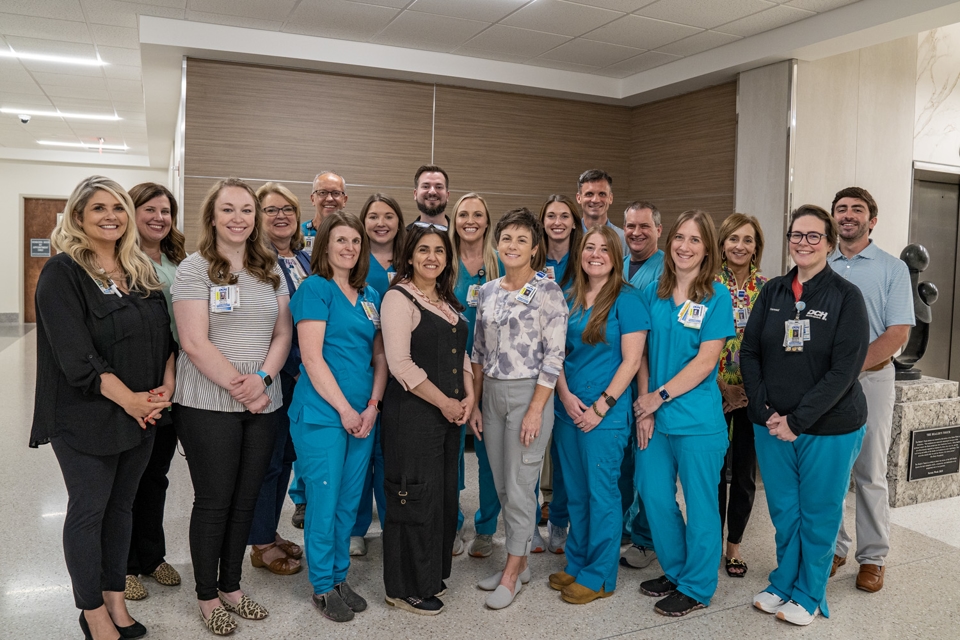The DCH Health System provides information about community-acquired MRSA and a link to the CDC.
With all the recent media coverage about community-acquired MRSA, DCH Health System is pleased to provide this information and a link to the latest information from the Centers for Disease Control and Prevention about MRSA in schools.
Staphylococcus aureus often referred to simply as 'staph', are germs commonly found on the skin or in the nose of healthy people. Many carry the germ without it causing any problem (colonized). Staph germs are one of the most common causes of skin infections in the United States. Most of these skin infections are minor (such as pimples and boils). They can be treated without antibiotics. However, staph bacteria also can cause serious infections (such as surgical wound infections, bloodstream infections, and pneumonia.)
Some staph germs have become resistant to antibiotics. MRSA (methicillin-resistant Staphylococcus aureus) is a type of staph that is resistant to antibiotics called beta-lactams. Beta-lactam antibiotics include methicillin and other more common antibiotics such as Keflex, penicillin and amoxicillin. Community-acquired MRSA infections are acquired by persons who have not been hospitalized or had a medical procedure within the past year.
Staph germs are one of the most common causes of skin infection in the United States. They also cause pneumonia, surgical wound infections, and bloodstream infections. Most MRSA infections occur among patients in hospitals or other health care settings, however, it is becoming more common in the community setting.
What does a staph or MRSA infection look like?
Staph germs, including MRSA, can cause skin infections that may look like a pimple or boil and can be red, swollen, painful, or have pus or other drainage. More serious infections may cause pneumonia, bloodstream infections or surgical wound infections.
Are certain people at higher risk for community-acquired staph or MRSA infections?
The Centers for Disease Control and Prevention has found clusters of community-acquired MRSA in athletes, military recruits, children, Pacific Islanders, Alaskan Natives, Native Americans, men who have sex with men and prisoners. Factors that have been linked to the spread of MRSA skin infections include:
- close skin-to-skin contact
- openings in the skin such as cuts or abrasions
- contaminated items or surfaces
- crowded living conditions
- poor hygiene
If you think you may have a staph or MRSA skin infection, see your health care provider.
If I have staph or MRSA skin infection, what can I do to prevent others from getting infected?
You can prevent spreading staph or MRSA skin infections to others by following these steps:
1. Cover your wound. Keep wounds that are draining or have pus covered with clean, dry bandages. Follow your healthcare provider's instructions on proper care of the wound. Pus from infected wounds can contain staph and MRSA, so keeping the infection covered will help prevent the spread to others. Bandages or tape can be thrown away in the regular trash.
2. Clean your hands. You, your family, and others in close contact should wash their hands often with soap and warm water or use an alcohol-based hand sanitizer. Always wash your hands after changing the bandage or touching the infected wound.
3. Do not share personal items. Avoid sharing personal items such as towels, washcloths, razors, clothing, or uniforms that may have had contact with the infected wound or bandage. Wash sheets, towels, and clothes that become soiled with water and laundry detergent. Drying clothes in a hot dryer, rather than air-drying, also kills germs in clothes.
4. Talk to your doctor. Tell any health care providers who treat you that you have or had a staph or MRSA skin infection.
Prevention
Practice good hygiene.
1. Keep your hands clean by washing thoroughly with soap and water, or using an alcohol-based sanitizer.
2. Keep cuts and scrapes clean and covered with a bandage until healed.
3. Avoid contact with other people's wounds or bandages.
4. Avoid sharing personal items such as towels or razors.
Most staph and MRSA infections are treatable with antibiotics. If you are given an antibiotic, take all of the doses, even if the infection is getting better, unless your doctor tells you to stop taking it. Do not share antibiotics with other people or save unfinished antibiotics to use at another time.
Many staph skin infections may be treated by draining the abscess or boil and may not require antibiotics. Only health care providers should drain skin boils or abscesses.
If after visiting your health care provider the infection is not getting better after a few days, contact them again. If other people you know or live with get the same infection, tell them to go to their health care provider.
It is possible to have a staph or MRSA skin infection come back (recur) after it is cured. To prevent this from happening, follow your health care provider's directions while you have an infection. Also, follow prevention steps after the infection is gone.
Click here for information provided by the Alabama Department of Public Health for information provided by the Alabama Department of Public Health.





